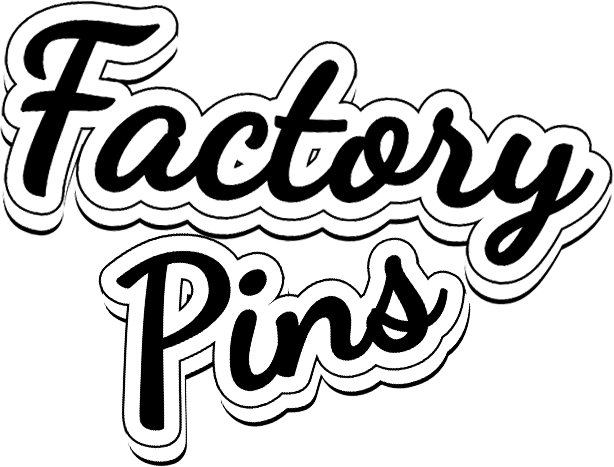Crafting custom enamel pins is both an art and a science. The choice of materials not only influences the look and feel of your design but also affects durability, production cost, and perceived value. In this article, we’ll explore the top materials used in enamel pin manufacturing, compare their advantages and drawbacks, and offer guidance on selecting the perfect substrate and plating for your next pin project. Whether you’re a brand looking to boost merchandise sales or a hobbyist seeking the finest quality, this guide will help you make an informed decision.
Why Material Matters for Custom Enamel Pins
- Durability & Wear Resistance
- The base metal and plating determine how well the pin withstands daily use. Pins made from high-quality alloys resist chipping, scratching, and corrosion.
- Finish & Visual Appeal
- Different metals and plating finishes (gold, silver, black nickel, etc.) create unique reflections and color contrasts, enhancing the pin’s aesthetic.
- Production Cost & Turnaround
- Material selection can significantly impact per‑unit cost and lead times. Some alloys are more expensive or require longer processing.
- Weight & Feel
- Heavier, denser metals feel more substantial in hand and on clothing, conveying a premium impression to European and American consumers.
1. Common Pin Base Metals
1.1 Brass
- Overview: A copper‑zinc alloy prized for its bright yellow-gold color and ease of stamping.
- Pros:
- Naturally resists corrosion.
- Takes fine detail well.
- Affords a warm, premium look.
- Cons:
- Slightly higher cost than iron.
- Can develop patina over time (though plating prevents this).
1.2 Copper
- Overview: A soft, malleable metal with excellent conductivity.
- Pros:
- Deep, rich color through patinas (antiquing).
- Easy to etch for detailed designs.
- Cons:
- Softer substrate; may dent under stress.
- Requires plating to prevent tarnish.
1.3 Iron
- Overview: A strong, cost‑effective metal commonly used for basic soft enamel pins.
- Pros:
- Budget‑friendly.
- Robust strength.
- Cons:
- Prone to rust if plating is compromised.
- Heavier and less “luxe” than brass or copper.
1.4 Zinc Alloy
- Overview: A versatile alloy that can be die‑cast into complex shapes.
- Pros:
- Great for 3D or sculptural pin designs.
- Lower tooling costs for complex molds.
- Cons:
- Slightly less detailed etching than brass/copper.
- Can feel lighter and less premium.
2. Enamel Types & Their Interplay with Materials
2.1 Soft Enamel
- Pours into recessed metal outlines and leaves raised lines.
- Works well with iron and zinc, since the recessed areas hold the enamel.
- Delivers a textured surface—ideal for a vintage or tactile finish.
2.2 Hard Enamel (Cloisonné)
- The enamel is filed and polished flush with the metal surface.
- Best paired with brass or copper substrates to achieve mirror‑like polish.
- Yields a smooth, gemstone‐like feel favored by premium brands.

3. Popular Plating & Finishing Options
| Plating Type | Description | Best Paired Base Metal | Style & Use Cases |
|---|---|---|---|
| Gold Plating | Bright yellow, rose gold, or antique. | Brass, Copper | Luxury, jewelry‑inspired pins. |
| Silver Plating | Cool‑toned, brilliant shine. | Brass, Copper | Modern, minimalist designs. |
| Black Nickel | Deep gunmetal finish, bold contrast. | Iron, Zinc Alloy | Edgy, gothic, or industrial. |
| Antique | Dark crevices, aged appearance. | Brass, Copper | Vintage, steampunk aesthetics. |
| Matte | Soft sheen, non‑reflective. | Any | Contemporary, understated pins. |
4. Pros & Cons at a Glance
| Material / Finish | Pros | Cons |
|---|---|---|
| Brass + Hard Enamel | Luxurious look; durable; smooth, polished surface. | Higher cost; longer production time. |
| Copper + Antique Soft Enamel | Rich tonal depth; intricate patina; budget‑friendly. | Prone to dents; requires plating for durability. |
| Iron + Soft Enamel | Low cost; robust; textured finish. | Can rust; less premium appearance. |
| Zinc Alloy + 3D Hard Enamel | Complex shapes; lower tooling cost; consistent fill. | Lighter feel; slightly less sharp detail. |
5. How to Choose the Right Material for Your Audience
- Align with Brand Positioning
- Premium brands (jewelry, fashion) benefit from brass + hard enamel with gold or silver plating.
- Casual or mass‑market giveaways can leverage iron + soft enamel to keep costs down.
- Consider Design Complexity
- For embossing or sculptural elements, zinc alloy die‑casting excels.
- Fine linework and vibrant color blocks call for brass or copper substrates.
- Estimate Production Volume
- High‑volume orders can amortize tooling for zinc alloy molds.
- Small batches (50–200 pcs) often stay cost‑effective with standard brass stamping.
- Factor in End‑Use & Wear
- Pins destined for outdoor events or heavy handling should use hard enamel on durable metals.
- Decorative pins (lapel art, hat embellishments) can embrace soft enamel textures.
Conclusion
Choosing the best materials for custom enamel pins comes down to balancing aesthetic goals, budget constraints, and production requirements. Brass and copper offer premium appeal and fine detail, iron provides cost‑effective durability, and zinc alloy unlocks 3D possibilities. Pair these substrates with the right enamel type (hard vs soft) and plating finish to craft pins that resonate with European and American audiences. By understanding the properties of each material, you can elevate your merchandise, delight your customers, and optimize for both quality and cost.
Ready to bring your enamel pin vision to life? Contact our design team today to discuss materials, finishes, and pricing tailored to your brand!


